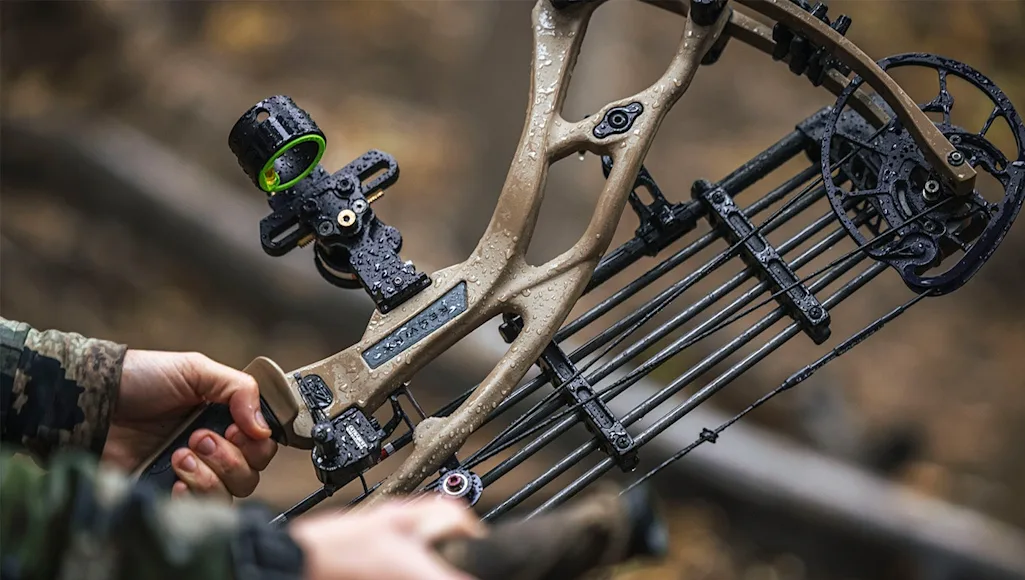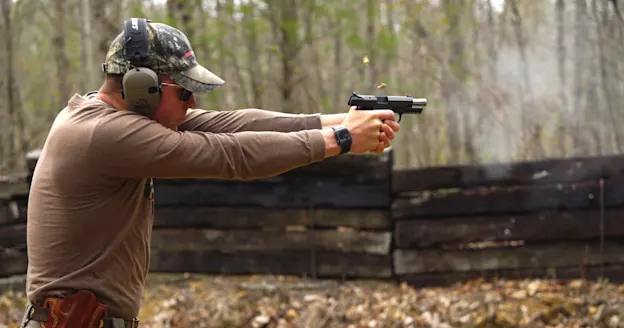_We may earn revenue from the products available on this page and participate in affiliate programs. Learn more ›
_
Hoyt’s latest flagship compound bow, the Carbon RX-7, earned F&S’s Editor’s Pick Award for 2022. I spent much of the 2021 bow season hunting with the Hoyt Ventum 30
, which debuted the brand’s binary HBX cam system. The Carbon RX-7 has a slightly modified system, the HBX Pro, which is even better—and just one reason many reasons why the bow took top honors in this year’s F&S Bow Test
. The cam features two module sizes to optimize performance in a variety of draw lengths (25 to 30 inches for the 30-inch bow that we tested).
Hoyt Carbon RX-7 Specs
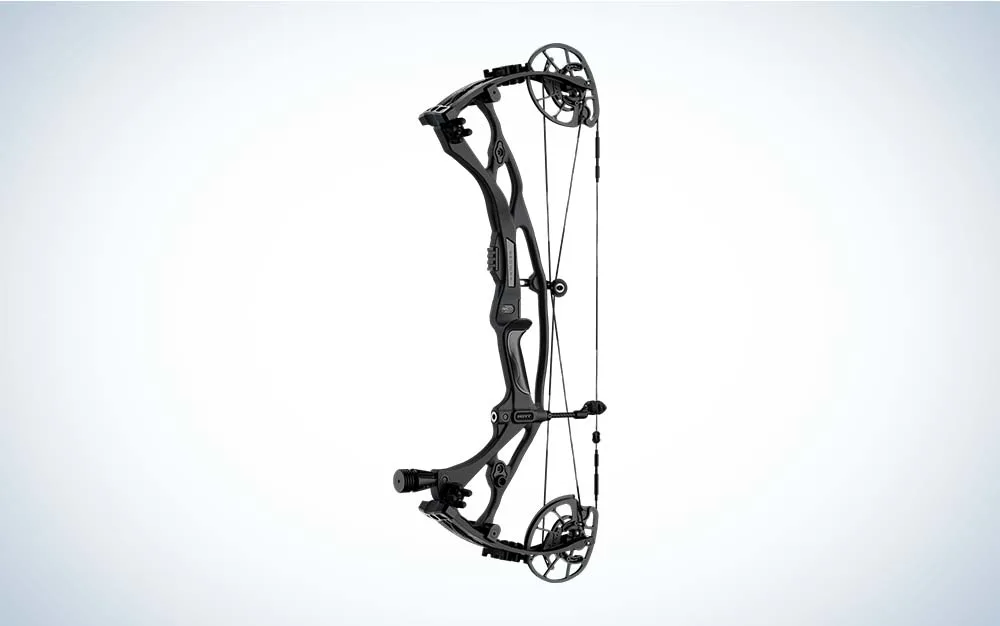
Test Speed: 321 fps. (through our chronograph, at 60 pounds of draw weight and 28 inches of draw length; see “How We Test” below)
Advertised ATA Speed: 342 fps
Axle-to-Axle Length: 30 inches
Brace Height: 6 inches
Weight: 4 pounds, 11 ounces
Efficiency: 81.3%
Final Score: 95.5 (out of 100)
Hoyt’s been a leader in carbon riser bows since debuting the Carbon Matrix more than a decade ago. The risers are known for being comfortable in the hand and especially tough. (They had a truck parked on top of one at the ATA Show one year). The Carbon RX-7 REDWRX riser is the newest iteration and includes some hunt-friendly upgrades like a riser-mounted picatinny rail to accommodate the newest sights, as well as a dovetailed Integrate rest mounting system. It also has an SL sidebar mount and an adjustable quiver mount.
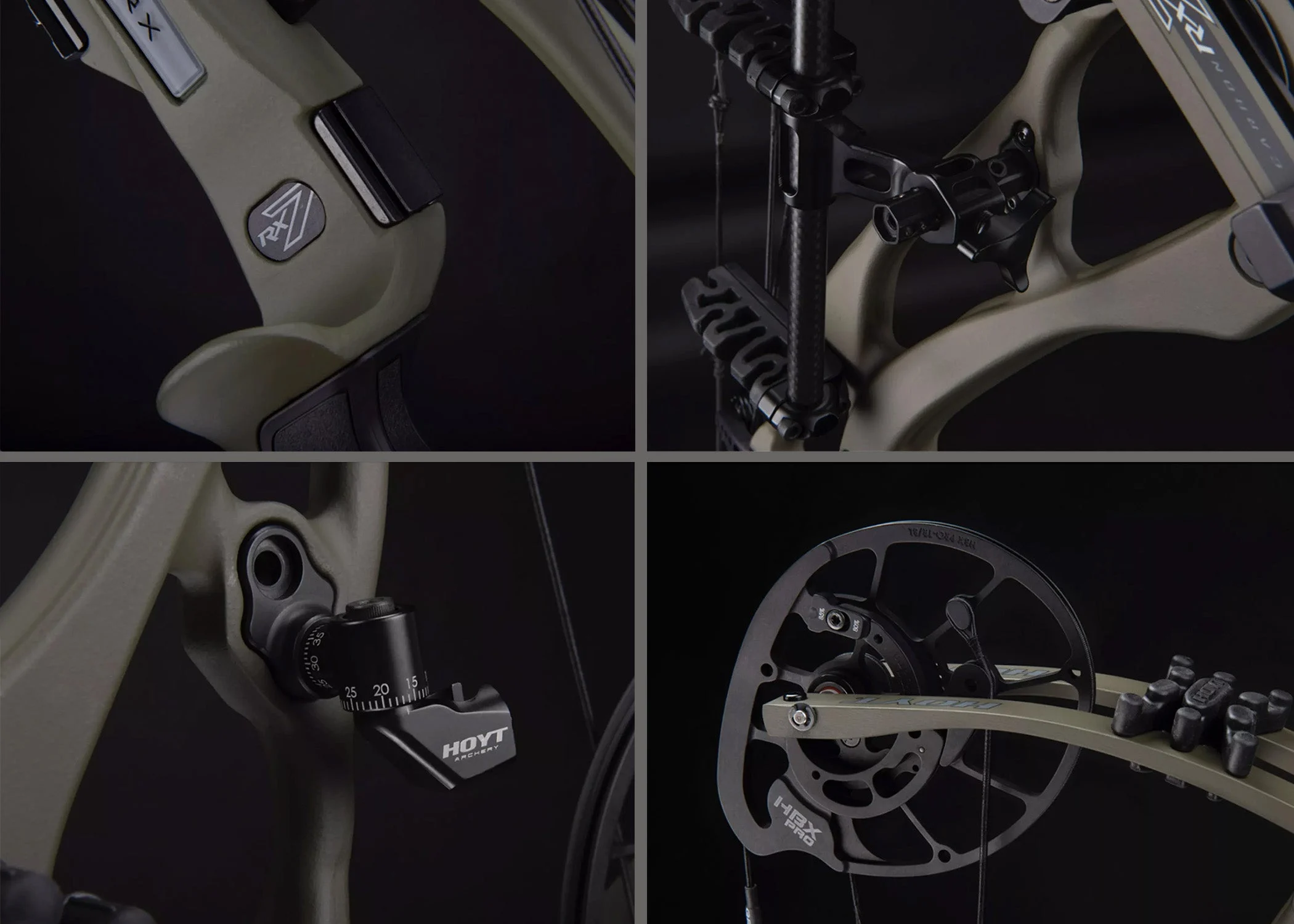
The new Carbon RX-7 features, clockwise from top left, an Integrate rest attachment, quiver mount, sidebar attachment, and new HBX Pro cams. Hoyt
The RX-7 has several vibration dampening features incorporated, too, and they work; this bow was noticeably dead in the hand, and after measuring them at Stress Engineering (see “How We Test” below), only the Elite Envision had less vibration. The RX-7 was louder than some of the other bows in out test, but in a field of quiet bows overall, the difference in sound wasn’t something any of us could detect in the absence of Stress’s measurements.
As is often the case with our winning flagship bow, the RX-7 won because it essentially did nothing wrong in any of the objective categories, and was a crowd favorite in all the subjective ones. It missed being the fastest bow by only a few feet per second, and it was among the test’s most accurate shooters (and for me personally, it was the most accurate, with average groups of just under an inch).
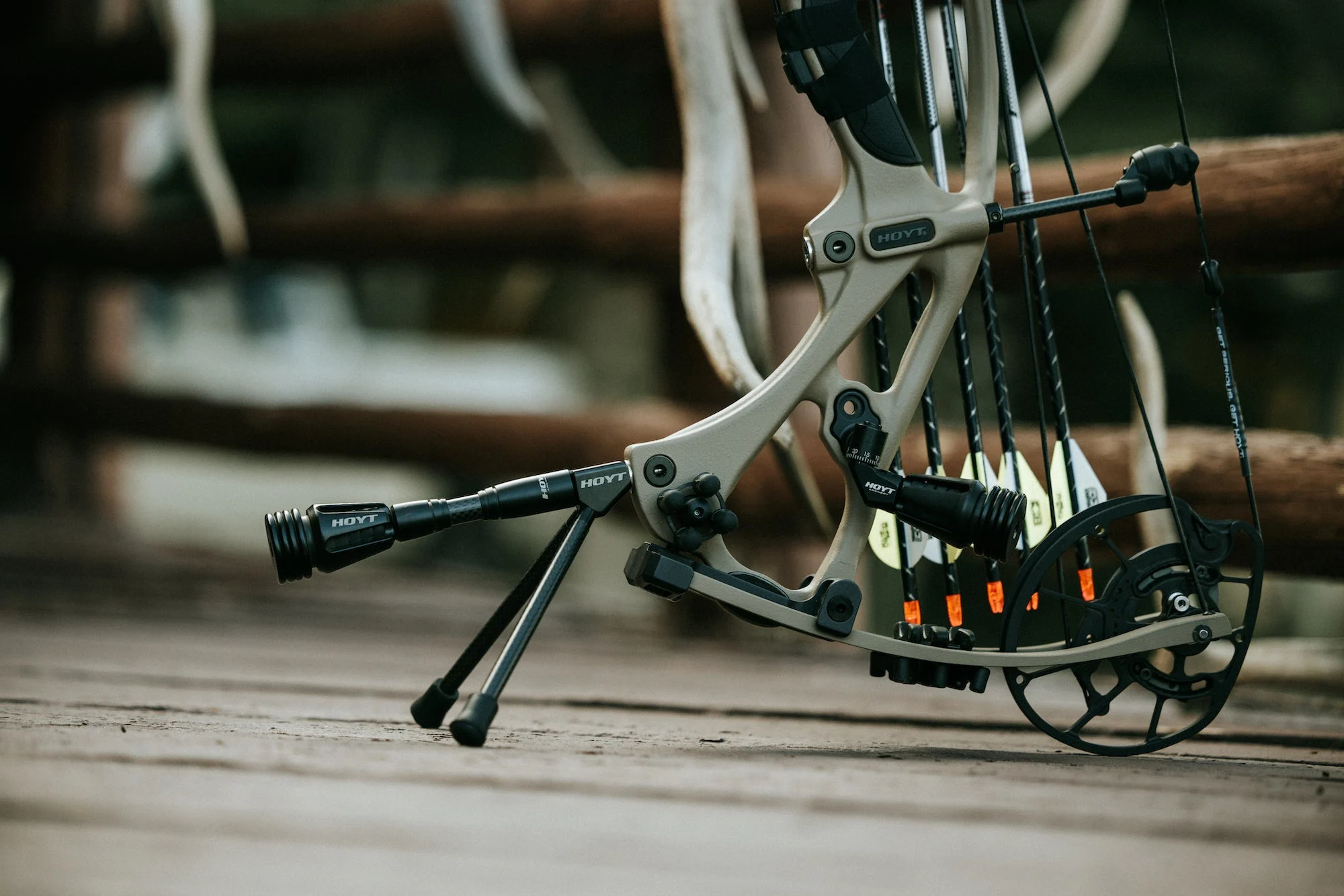
Another cool feature on the RX-7 is a low-mounted Short Stop stabilizer that accepts Carbon Go-Stix for use as a bow stand. Hoyt
The draw cycle is slightly demanding on the front end, but is smooth throughout, with a perfect valley for hunting and a solid back wall. In that category, this bow was an overall test-panel favorite. Add in a flawless fit and finish, light weight, and handy dimensions, and the RX-7 is a winner. Our only complaint is the hefty price tag.
Who Should Buy the Carbon RX-7?
If you have the extra coin and don’t mind paying for the very best, why not splurge on the Carbon RX-7? You won’t find a better bow for 2022. Performance-wise, you can get just about as much from the aluminum-riser Ventum Pro and save some money, but there are real benefits to a carbon riser, including longevity. I know several bowhunters who invested in a Carbon Matrix years ago, still shoot them today, and see no reason to change.
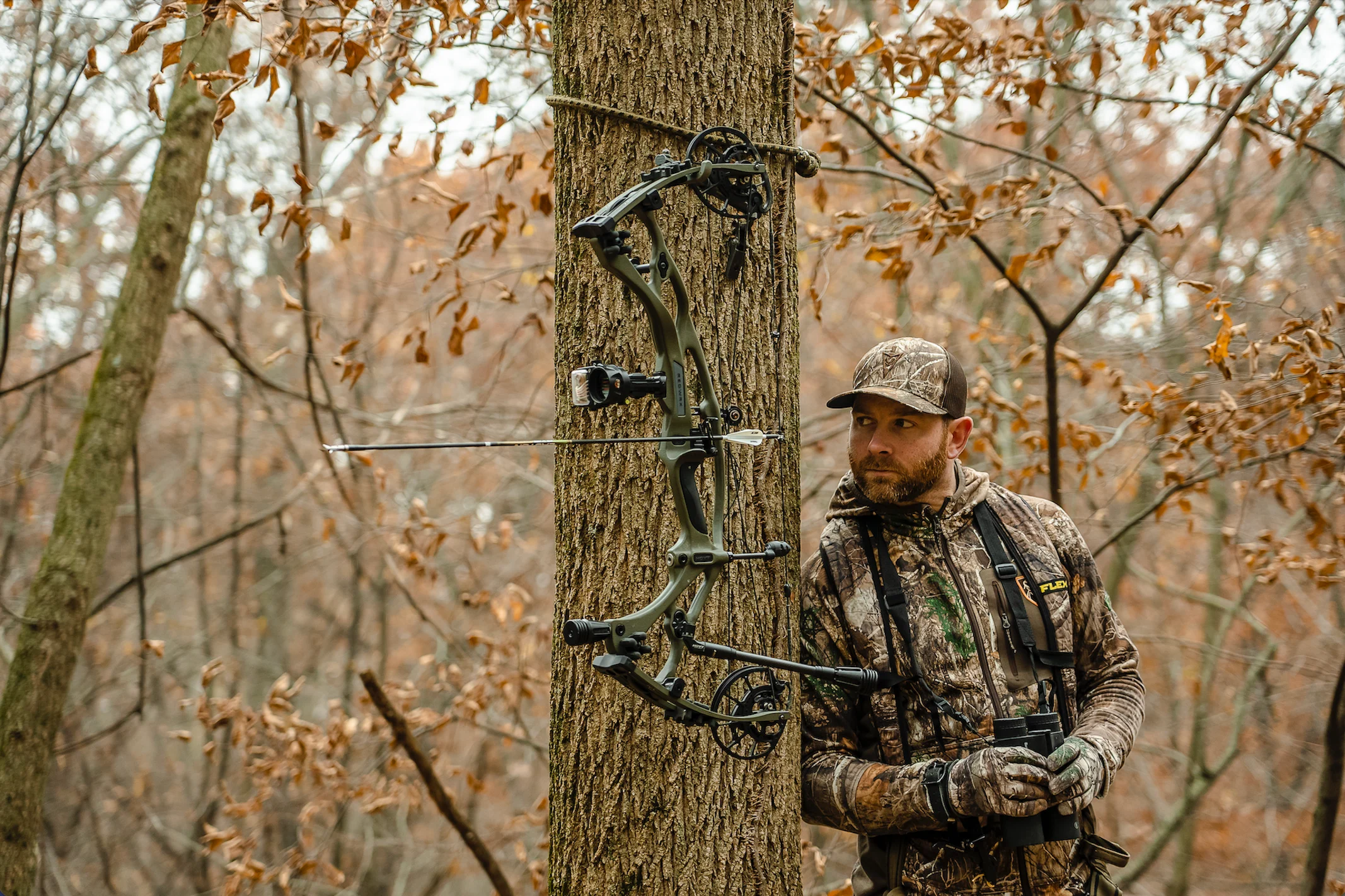
The Carbon RX-7 is especially well-suited to open-country hunting, but it’s a great bow for the treestand, too. Hoyt
The RX-7 is fast, and though it had a perfect draw-cycle score, shooters can expect a different feel than, say, the runner-up Mathews V3X
. The Hoyt is a little more demanding on the front end and then get’s easier as you. Some testers like that better than others, but no one had a real problem with it. In the end, last year’s last year’s Ventum and this year’s Carbon RX-7 are the best compound bows from Hoyt in a while. A decade from now, I could see folks pointing to the RX-7 and saying they still shoot it, and see no reason to change.
How We Testes the Hoyt Carbon RX-7
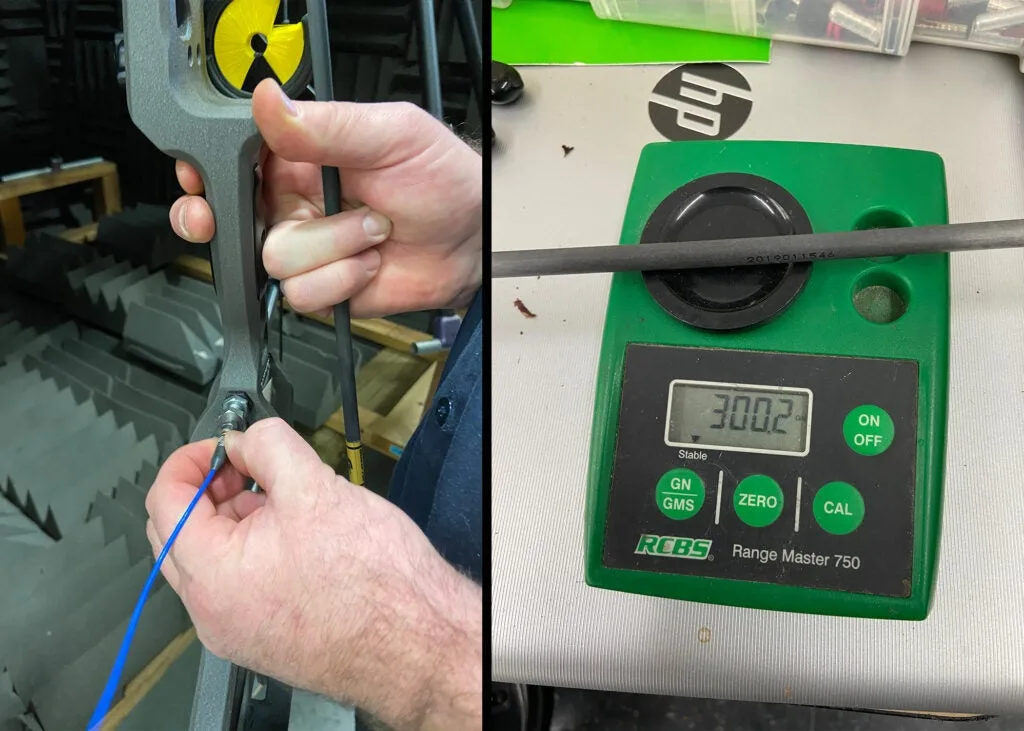
Left: An engineer at Stress attaches a cable to a bow’s stabilizer port to measure vibration. Right: Weighing arrows to IBO spec. Will Brantley
The Hoyt Carbon RX-7 was part of the annual F&S Bow Test
, which took place at the Stress Engineering Services
lab in Mason, Ohio, and on my farm in southwestern Kentucky, where we wrung every bow out and pitted them head-to-head. Our test panel included the engineers in Stress’s Outdoor Division, as well as myself; former pro-shop owner and bow technician Danny Hinton; and Zach Bell, a serious bowhunter and target shooter. We scored each bow on a 100-point scale in the following categories, in the following ways:
Accuracy and Forgiveness: 20 Points
This category is the most time-consuming part of our process, but also the most important. Our Accuracy and Forgiveness test takes the average of five, three-shot groups per bow from a panel of three shooters. All of the bows we test will shoot better than any of us can, individually. The idea here is to notice trends that make some bows inherently easier (or more difficult) to group with. This year’s test was conducted indoors at 25 yards over the course of three days using hunting spec Carbon Express Maxima Red arrows, HHA sights, and peep sights installed.
Carbon RX-7 Results
All of the testers shot the RX-7 well. It finish tied for second, just behind the Mathews V3X
, in Accuracy and Forgiveness, with a score of 19 out of 20.
Speed: 20 Points
Each bow is set to 28 inches and 60 pounds (advertised IBO specs would be from bows set at 30 inches and 70 pounds, but 5 grains of arrow weight per pound of draw length gets you close). Bows that didn’t arrive to spec were adjusted if possible. That done, we prepared a couple IBO-spec, 300-grain arrows that were used for measuring speed (an average of three shots through my chronograph). At 30 inches, you could assume another 20 fps. or so added to the velocity measurement. We also use a Whisker Biscuit rest and with that, you could assume a loss of about 5 fps. So, compensating for the shorter draw length and the rest, and you can assume an extra 15 fps, give or take, added on to our published speeds.
Carbon RX-7 Results
The fastest bow in our 2022 bow test was the Xpedition Smoke at 324 fps. The RX-7 was just 3 fps behind it at 321, and the next closest bow was 315. In other words, it’s the second-fastest new flagship bow on the market—and by a significant margin. It scored a 19.5 out of 20 in this category.
Draw Cycle: 20 Points
This is our only double-weighted subjective category. It’s an evaluation of how comfortable a bow is to draw, hold, and shoot—important things to know both on paper and when stuck at full draw in a deer stand. For this category, we’re evaluating the comfort of the overall cycle, the valley, and the back wall, and then comparing what we think we feel to the draw force curves mapped out at Stress Engineering.
Carbon RX-7 Results
The HBX Pro cam system delivers a near-perfect draw cycle. It’s a slight but noticeable improvement over last year’s HBX system, and a significant improvement in this regard over the brand’s earlier cam systems. The RX-7 tied for first place in this category, with a score of 19.5 out of 20.
Noise (lack of): 10 Points
At Stress Engineering in Mason, Ohio, a sound-proof chamber is used to measure noise of each bow, again, using the IBO-spec 300-grain arrow.
Carbon RX-7 Results
This was the RX-7’s biggest stumble. It finished last in this category, notching an 8 out of 10.
Vibration (lack of): 10 Points
Another measurement taken at Stress Engineering, this one with an accelerometer mounted to the bow’s stabilizer port.
Carbon RX-7 Results
As if to make up for the noise issue, the RX-7 finished right near the top for lack of vibration, with a 9.5 out of 10. Only the Elite Envision got a 10. All the testers agreed that the RX-7 felt almost perfectly dead in the hand.
Fit and Finish: 10 Points

The Carbon RX-7 is a beautifully finished bow. Hoyt
This is a subjective category that not only assesses how a bow looks (some are sharper than others), but how well it’s put together. We’re checking for things like tool marks and blemishes in the finish. It’s rare that we deduct more than a point or two in this category for a flagship bow.
Carbon RX-7 Results
This is just a gorgeous bow. Ten out of 10.
Balance, Handling, and Grip: 10 Points
How does a bow feel in the hand and up in a tree? Is it light and handy, or heavy and cumbersome? At full draw, does the grip facilitate good shooting form, or does it get in the way? Worst of all, does it dig into the hand and cause pain (we’ve seen it all before). Is the bow easy to hold on target? Does it tip or flip this way or that upon release? This is a subjective category, and we take all of these things into consideration when assigning a score.
Carbon RX-7 Results
The RX-7 was not just the lightest bow in our test, but was also very easy to maneuver and felt perfectly balanced at full draw. It was the only bow to get a perfect score in this category. When it’s all said and done, Hoyt’s newest flagship is a fast, accurate, lightweight bow that may need a little work to quiet it down, but is dead in the hand and balances beautifully. No wonder it took our Editor’s Pick award.

